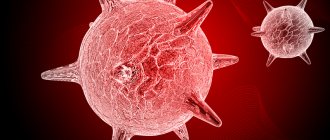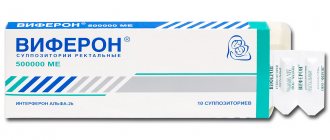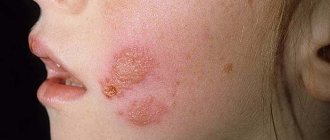Herpes simplex (Herpes Simplex) is a widespread infectious disease of the skin and mucous membranes, resulting from infection with herpes simplex viruses, characterized by a variety of clinical manifestations and a chronic course.
Herpes simplex is not so “simple” in real life. With his appearance, long-term troubles begin. The herpes simplex virus (HSV), for example, will “give you away” to everyone around you ten meters away. Bright rashes in the form of bubbles around the mouth, on the mucous membranes of the lips, sometimes on the cheeks and wings of the nose signal to others that they should stay away from you.
The painfulness of the rashes and the difficult course of the herpetic infection can make a person unable to work, and a sick leave or absence from school is quite appropriate here.
Herpes simplex (English: Herpes Simplex) is a viral disease with a characteristic rash of grouped blisters on the skin and mucous membranes.
The cause of the disease is the herpes simplex virus (HSV) - a DNA virus belonging to the family Herpesviridae (herpes viruses), the subfamily alphaherpesvirinae (alpha herpesviruses), the genus Simplexvirus (herpes simplex).
There are 2 serotypes of the herpes simplex virus: HSV-1 type and HSV-2 type.
Type 1 (English: herpes simplex virus type 1 - HSV-1; human herpes virus type 1 - HHV-1), the most common, the so-called orofacial, causing damage to the mucous membranes and skin mainly in the area of the upper and lower lips ( labial herpes or herpes labialis); wings of the nose and nasal passages (nasal herpes or herpes nasalis); in the area of the chin, cheeks, forehead (facial herpes or herpes facialis), in the oral cavity (herpes buccalis), pharynx (herpes pharyngealis). HSV type 1 can also cause damage to the mucous membranes and skin of other localizations, as well as the eyes, genitals, internal organs, central and peripheral nervous systems.
Herpes simplex virus type 2 (English: herpes simplex virus type 2 - HSV-1; human herpes virus type 2 - HHV-2), ranks 2nd in prevalence. HSV-2 type predominantly causes damage to the mucous membranes and skin of the urogenital organs (genital herpes (herpes genitalis), urethritis, cervicitis), perineum, anal area, lower extremities, buttocks (herpes glutaealis), therefore it is often called the genital herpes virus. HSV-2 can cause disease in newborns (newborn herpes or neonatal herpes), disseminated herpes.
Currently, there are more than 4 billion people in the world infected with herpes simplex virus types 1 and 2, and the annual increase in those infected is at least 25 million people. About 1 billion people—one sixth of the world's population—are infected with HSV-2. Genital herpes (GG) ranks third among sexually transmitted infections, second in frequency only to gonorrhea and non-gonococcal urethritis.
The herpes simplex virus can be present in various biological fluids of the body (in saliva, urine, semen, secretions from the cervix, urethra, vagina, discharge from the nasopharynx, tear fluid, blood, cerebrospinal fluid, vesicular fluid of rashes, etc.).
Types of herpes virus
To date, 8 types of viruses of the herpes family are known that cause diseases exclusively in humans.
| Human herpesviruses | Designations | Main diseases associated with this type of herpes viruses |
| Simplex virus type 1 | HSV-1 | Labial herpes. Herpes of the skin and mucous membranes Ophthalmoherpes. Herpetic encephalitis, Pneumonitis. |
| Simplex virus type 2 | HSV-2 | Genital herpes. Neonatal herpes. |
| Varicella zoster virus - herpes zoster | VVO-OG | Chicken pox. Herpes zoster. |
| Epstein-Barr virus | VEB | Infectious mononucleosis. Nasopharyngeal carcinoma. |
| Cytomegalovirus | CMV | Congenital lesion of the central nervous system. Retinopathy. Pneumonitis. Hepatitis. |
| Human herpes virus types 6 and 7 | HHV-6A HHV-6B HHV-7 | Lymphotropic viruses. HHV-7 – chronic fatigue syndrome |
| Human herpes virus type 8 | HHV-8t | Kaposi's sarcoma associated with HIV infection and AIDS. Lymphoproliferative diseases |
Everyone has a risk of encountering each of the 8 types of herpes family viruses.
There are three subfamilies in the Herpesviridae family:
- alphaherpesvirinae (alpha herpes viruses);
- betaherpesvirinae (beta herpes viruses);
- gammaherpesvirinae (gammaherpesviruses).
HHV-1, HHV-2 and HHV-3 (varicella zoster virus) belong to the subfamily alphaherpesvirinae, to the subfamily betaherpesvirinae - HHV-5, HHV-6 and HHV-7, to the subfamily gammaherpesvirinae - HHV-4 and HHV- 8. It should be noted that representatives of the same subfamily have some common biological properties.
The main properties of herpes simplex viruses include: wide distribution (ubiquitinity), universal susceptibility, opportunism (especially with a decrease in the body’s immunoreactivity), pantropism (the ability to infect various organs and tissues of the body and cause polymorphism in the clinical manifestations of the disease), the ability to use various transmission mechanisms and parasitism (lifelong persistence and latency) in the body, cause immunodeficiency, etc.
Herpes viruses - especially HSV types 1 and 2, varicella zoster virus/shingles and cytomegalovirus are playing an increasingly important role in the infectious pathology of the Russian population. According to WHO, infections caused by HSV-1 and 2 rank second among the causes of death in people after influenza. Herpes simplex viruses (HSV) and cytomegalovirus (CMV) in people of reproductive age (in some cases) cause serious complications during conception and pregnancy, and increase the risk of developing cervical cancer several times. The spread of various forms of herpesvirus infection developing against the background of immunodeficiency states is of great importance.
90% of the world's population are carriers of the herpes simplex virus. According to forecasts from the World Bank of Information, the problem of herpes infection in the near future is defined as “a global problem for humanity.” According to statistics, in Russia the number of hospitalized patients diagnosed with herpes simplex annually exceeds 2.5 million people. More than 500 thousand patients a year contact ophthalmologists with manifestations of ophthalmoherpes caused by HSV.
Detection of herpes simplex virus
As stated earlier, herpes simplex viruses cause disease exclusively in humans. The source of infection is patients with obvious, latent or asymptomatic forms of the disease, as well as virus carriers (asymptomatically releasing the virus into the environment). Human infection follows contact with patients or virus carriers. The entry points for the herpes simplex virus are the mucous membranes of the lips, oral cavity, nasopharynx, genitals, conjunctiva of the eyes, as well as the skin. The risk of infection with the herpes simplex virus increases with trauma to the mucous membranes, for example, with diseases of the urogenital tract, accompanied by disruption of the integrity of the mucous membranes and the development of ulcers, erosions and cracks.
The routes and mechanisms of HSV infection are numerous and varied. The virus is transmitted through horizontal and vertical routes.
Contact path:
- Infection occurs when virus-containing biological fluids come into contact with mucous membranes during intimate contacts: sexual contact (genitogenital, genitogenital, orogenital contacts), kissing, touching.
- Autoinfection is possible - mechanical transfer of the virus from the herpetic focus to other places, for example, the introduction of the virus from the oral cavity with herpetic stomatitis by hand to the conjunctiva of the eye, in the genital area, to any part of the body through microdamages of the skin. Orogenital contacts can lead to auto-infection of the genitals in the presence of herpetic stomatitis or the presence of a virus in saliva without visible stomatitis, and vice versa, infection of the oral mucosa is possible in the presence of genital herpes.
- Infection through household items infected with the virus: sharing the same dishes, personal hygiene items, towels, toys, etc.
Airborne : the presence of the virus in saliva provides the possibility of its transmission by airborne droplets, although this route of infection is not the leading one. transfusion route (after transfusion of blood and its components), Transplantation route (during transplantation of organs and tissues). Blood transfusion and transplantation routes are horizontal transmission routes.
The vertical infection mechanism includes:
- transplacental, transcervical route from the infected birth canal and genitals;
- ascending path (from the infected cervix to the uterine cavity of a pregnant woman);
- transovarial infection of the fetus - from the pelvic cavity through the fallopian tubes;
- intrapartum infection of the fetus (when the fetus passes through the infected birth canal of the mother).
The herpes simplex virus is transmitted from a person who has an active phase of the disease (regardless of whether it is caused by a primary infection or an exacerbation of the latent (latent) form of the disease). The source of infection is people with obvious, latent or asymptomatic forms of the disease, as well as virus carriers (asymptomatically releasing the virus into the environment).
Herpes simplex refers to infections with lifelong carriage of the virus. This means that after the initial infection, complete elimination of the virus from the body does not occur. Currently, herpes simplex is considered a chronic disease that has a cyclical course, when periods of exacerbation alternate with periods of remission of varying duration.
The cause of exacerbation of herpes simplex may be the following factors:
- hypothermia, overheating, hyperinsolation,
- neuro-emotional stress,
- trauma, medical and cosmetic procedures (abortion, surgery, insertion of an intrauterine device, tattooing, piercing, etc.),
- somatic, psychosomatic, endocrine, oncological, infectious diseases,
- decreased immunity, primary or acquired (secondary),
- poor nutrition (strict diet),
- long-term use of medications (hormones, chemotherapy, cytostatics).
Reminder for herpes simplex disease
The herpes simplex virus is highly contagious. Therefore, sick people and those around them must take the necessary precautions. Measures aimed at preventing the spread of infection and infecting other people:
- Do not touch the area where the rash is located with your hands. If you do touch them, wash your hands thoroughly with soap.
- Do not apply medicinal or antiviral agents to lesions (rash elements) with your hands. Use cotton swabs for this.
- Do not comb, squeeze, open blisters, or tear off crusts. This can lead to the spread of infection to adjacent areas of the skin.
- The patient should only have his own separate dishes, towels, and other hygiene items.
- During illness, you should refrain from kissing and sexual intercourse.
- If you have contact lenses, you should never wet them with saliva.
Discuss on the forum
Precautionary measures
In order for the disease to pass in a mild form and its complications to appear, the following recommendations should be followed:
- Rule #1. Avoid touching your face with your hands, especially in the area of blisters. Otherwise, you risk spreading the infection to a larger area of skin.
- Rule #2. During illness, be especially careful about your personal hygiene.
- Rule #3. Isolate yourself and try to avoid close contact with people, especially the elderly and children.
Herpes simplex virus, symptoms
Features of local clinical symptoms to a certain extent depend on the localization of herpetic eruptions. The herpes simplex virus can infect any area of the skin and mucous membranes: on the lips (herpes labialis), wings of the nose (herpes nasalis), facial skin (herpes facialis), genitals (herpes genitalis), buttocks (herpes glutaealis), on the mucous membrane of the cavity mouth (herpes buccalis), pharynx (herpes pharyngealis), conjunctiva (herpes conjunctivalis), urethra (herpes urethralis), etc. Typical localization of herpes simplex is the skin of the face: the circumference of the mouth, especially the corners, the red border of the lips (herpes labialis), the wings of the nose (herpes nasalis); The skin of the cheeks, ears, forehead, and eyelids is somewhat less commonly affected. Rashes of elements on the skin of the genitals, buttocks, thighs, lower back, fingers are often observed; Other localization is also possible.
There are 4 periods during the disease:
- premonitory,
- catarrhal,
- period of rashes,
- period of regression.
The prodromal period is the precursor to the rash. 1-2 days before the appearance of erythema and blisters, subjective sensations are usually noted in the form of pain, burning, itching, tingling, and a feeling of discomfort in the same areas of the skin where rashes will appear in the future. During this period, viruses multiply in target cells. It is often asymptomatic.
The catarrhal period is a precursor to local manifestations. In the first days of the disease, especially with primary damage, local manifestations are preceded by signs of general intoxication: increased body temperature, chills, malaise, muscle, joint and headaches. During this period, the herpes simplex virus enters the intercellular space and spreads through the circulatory and lymphatic systems. Edema erythema is formed. Sometimes signs of general intoxication appear simultaneously with the appearance of rashes.
The period of rash - the typical clinical picture of the disease is characterized by the appearance of edematous erythema of varying degrees of intensity, against the background of which grouped bubbles (vesicles) with a diameter of 1 to 3-4 mm with a tense tire and serous transparent contents quickly appear. Grouped blisters filled with clear liquid against a background of edematous erythema are the main sign of herpetic infection.
Rashes of blisters with herpes simplex can appear on the mucous membranes and skin in the area of the red border of the lips, mouth, upper palate, gums, tonsils, nasopharynx, cheeks, forehead, ears, eyes, genitals, buttocks, thighs, lower back, etc. The number of such vesicles varies significantly - from single elements to several dozen. Occasionally merging, they form flat, tense, multi-chambered bubbles.
The appearance of a rash means that the virus infects the cells of the mucous membranes and skin. The more actively the virus multiplies, the larger the affected area.
Regression period - after a few days, the contents of the bubbles become cloudy, they open and erosions with fine scalloped outlines form. After 3–5 days, honey-yellow loose crusts form at the site of collapsed blisters and erosions, after which epithelization occurs. In the normal course of herpes, the process lasts 1.5–2 weeks, but occasionally extends to a month.
The acute period of herpetic infection lasts from 8 to 22 days. After a week, the severity of clinical manifestations begins to subside. After the initial infection, the virus remains in the body, accumulating in the spinal and cranial ganglia of the nervous system, and the immune system produces antibodies to it. Under the influence of provoking factors, a latent infection can become active at any time and become aggravated.
There are 2 stages of infection:
- Active stage of infection:
productive viral infection, the implementation of genetic information ends with the formation of viral offspring, daughter viral particles. An active infection may occur: - with clinical manifestations (relapse),
asymptomatic.
is an abortive viral infection, when there is no formation of new daughter virus particles.
Herpes simplex virus in women
, as a rule, affects the entrance to the vagina, the mouth of the urethra or the labia, but can affect extragenital areas, such as the perineum and anus, thighs, buttocks, and 70-90% of women are diagnosed with cervicitis. In complicated cases, the virus spreads to the uterus, fallopian tubes and ovaries. Herpes simplex virus, symptoms in women include blistering rashes, signs of inflammation, vaginal discharge, enlarged inguinal lymph nodes, itching when urinating, pain in the lower back, perineum and pelvis.
Herpes simplex virus in men
predominantly affects the area of the urogenital organs (glans penis, foreskin, urethra), perineum, pubis, scrotum. A feature of lesions caused by the herpes simplex virus in men is multifocality. The pathological process often involves the lower part of the urethra, the mucous membrane of the anus and rectum, which can occur secondary to the appearance of rashes on the external genitalia, or can occur as an isolated lesion.
Herpes simplex in men, in addition to the rash, is manifested by enlarged inguinal lymph nodes, lower back pain, burning in the groin, numbness in the pelvic area after prolonged sitting or sleep. Complications of infection can be herpetic prostatitis, urethritis, proctitis. Since the herpes simplex virus is an agent that disrupts spermatogenesis and has the ability to infect sperm, infection with this virus can cause infertility in men.
Prevention and treatment of the disease
A herpetic infection can resolve on its own without treatment, but in this case the recovery period will be longer and range from 1 to 3 weeks. If you start taking medications on time, the disease will go away faster and easier. Treatment should begin when the first symptoms appear - burning and tingling, in places typical for the virus.
Also, do not forget about preventive measures. Try to plan your day correctly, get enough sleep, and avoid stressful situations. On sunny days, use protective creams, and in the cold season, moisturizing hygienic lipsticks.
The following groups of drugs are used to treat herpes:
- Antiviral agents in the form of ointments and tablets. The most commonly used are Acyclovir, Penciclovir, and Valaciclovir. When using them, the duration of the disease can be reduced to three days.
- Painkillers and antipyretics. They are used to relieve unpleasant symptoms: high fever, itching and burning. If such manifestations occur, you can take paracetamol or any NSAID (Nise, Nimesil, Ibuprofen).
- Folk remedies also help combat discomfort during illness. Gel with aloe vera extract, witch hazel and lemon balm have proven themselves to be effective in treating infections.
Herpes simplex during pregnancy
Herpes simplex in pregnant women, especially those caused by herpes simplex virus type 2, is extremely dangerous, especially with primary infection during the first 12 weeks of pregnancy or the first episode of herpes or recurrence of herpes before childbirth.
Consequences of herpetic infection (acute, exacerbation of the chronic form) for pregnant women:
- pathology of pregnancy: recurrent miscarriage, polyhydramnios, threatened miscarriage, spontaneous abortion, non-developing pregnancy;
- complications of childbirth: premature birth, prolonged labor, long anhydrous period, weakness of labor, fetal asphyxia;
- complications in the postpartum period: sepsis, mastitis, endometritis, uterine subinvolution.
Consequences of herpes infection (acute, exacerbation of chronic form) for children:
- in the 1st trimester - frozen pregnancy, development of malformations;
- intrauterine infection with and without developmental defects: syndromes of cerebral palsy, DIC, CVS, pneumonia, jaundice of newborns, acute respiratory infections, mental retardation, sensorineural impairment of hearing, vision, low birth weight, decreased resistance to infections;
- damage to mucous membranes and skin - when passing through an infected birth canal.
Intrauterine infection of the fetus with HSV can occur:
- transplacentally, transcervically or ascending from the infected birth canal and genitals;
- transovarian - from the pelvic cavity through the fallopian tubes.
Infection of a newborn can occur:
- during childbirth - when passing through the birth canal;
- after childbirth (aerogenously or through contact with infected medical personnel, instruments, in violation of the sanitary and anti-epidemic regime, through milk).
In Russia, herpetic skin lesions occur in 15% of the population, genital herpes – in 6-10% of adults.
Factors causing the disease
The herpes virus may be present in our body, but not manifest itself. The disease begins to develop under certain factors - the virus is activated. The reasons for the appearance of herpes on the face are the same as the reasons for the appearance of herpetic blisters on other areas of the skin:
- hypothermia;
- violation of work and rest schedules;
- hypovitaminosis (regardless of the time of year);
- fatigue;
- chronic disorders of the immune system.
For relapses, it is also important that a periodically ill person does not attach importance to herpes and lets everything take its course, each time expecting that “it will go away on its own.”
Herpes simplex virus, diagnosis
Diagnosis of “herpes simplex” is made by collecting anamnesis, clinical examination, additional examination methods and is aimed at determining the severity of the condition and indications/contraindications for treatment.
With Herpes Simplex with characteristic elements of rashes and typical morphology, the diagnosis is established on the basis of clinical data, laboratory confirmation is not required.
Laboratory confirmation is required in the following cases:
- when establishing the etiology of the disease in asymptomatic and chronic relapsing course,
- when establishing the etiology of the disease during dissemination of the process,
- when uncharacteristic rashes or atypical localization of rashes appear,
- in the presence of meningeal syndrome in the cerebrospinal fluid, the titers of IgM and IgG anti-HSV ½, as well as HSV DNA ½ are examined,
- with the development of the first episode of the disease in pregnant women,
- during pregnancy with a burdened obstetric history,
- with infertility (male, female) of unknown origin,
- when establishing the etiology of the infectious process in HIV-infected persons or persons with secondary immunodeficiency states of various origins (cancer patients after courses of radiation and chemotherapy, bone marrow transplantation; persons receiving immunosuppressants; patients with viral hepatitis).
In the above cases, the clinical and epidemiological diagnosis of herpes simplex should be established based on a combination of anamnestic, epidemiological, clinical data and available laboratory research methods. It is recommended to confirm the diagnosis: by isolating the virus in cell culture (the “gold standard” of diagnosis); detection of HSV-1/-2 antigens in RIF; determination of HSV-1/-2 viral DNA in discharge from the lesion, biological materials (blood using polymerase chain reaction (PCR), detection of specific antiviral antibodies IgM, IgG HSV-1/-2, in blood serum using enzyme-linked immunosorbent assay (ELISA) To obtain an adequate result, it is recommended to carry out several laboratory diagnostic methods.
The entry of the herpes simplex virus into the human body is accompanied by the development of specific humoral and cellular immunity. Features of antiherpetic immunity: non-sterile (the virus is not eliminated from the body), type-specific (mainly against the corresponding type of virus), partially cross-linked. The state of humoral immunity can be assessed by identifying specific viral antibodies of the IgG, IgM classes HSV-1/-2 in the blood serum (for this diagnosis it is necessary to donate blood from a vein). Antibodies of the IgM and IgG type reflect the duration and severity of the disease.
The diagnostic value for primary herpes simplex is the detection of IgM and/or a fourfold increase in titers of specific immunoglobulins (IgG) in paired blood sera obtained with an interval of 14-21 days. Recurrent herpes usually occurs against the background of high IgG levels, indicating constant antigenic stimulation of the patient's body.
The appearance of IgM is a sign of primary infection or exacerbation of a latent infection. Antibodies to HSV class M can circulate in the blood for more than 3 months (up to several years). This phenomenon is associated with impaired immunity. In immunocompromised patients, with relapses of HI, antibodies to the virus (both IgM and IgG) may not be detected
Interpretation of diagnostic results.
If in your analysis:
- There is no IgM, IgG is below normal: this means that the body has not encountered the herpes simplex virus.
- There is no IgM, IgG is higher than normal: this means that the body has encountered the herpes simplex virus, but it is not known in what form it is now.
- IgM above normal or “detected”: indicates either primary infection with HSV or its reactivation from a latent state.
Discuss on the forum
Diagnosis of recurrent labial herpes.
In patients with rare relapses (1-2 relapses per year or less) with a localized form, serological and virological diagnosis is not rational. In patients with frequent relapses (4-6 times a year or more often), it is recommended to study the intensity of antiherpetic immunity (IgM and IgG titers of HSV-1 and 2), the state of the immune and interferon status. It is necessary to exclude the cause of secondary immunodeficiency and HIV infection.
Diagnosis of primary genital herpes, including in pregnant women.
It is recommended to confirm the clinical and epidemiological diagnosis by identifying specific IgM HSV-1/-2, as well as identifying HSV-1/-2 DNA in biological materials (blood) discharged from the lesion. It is necessary to study the state of the immune and interferon status.
Diagnosis of recurrent genital herpes, including in pregnant women.
Diagnostic and therapeutic measures are carried out for both spouses. If there are clinical indications, it is necessary to examine IgM and IgG titers to HSV-1/-2 in both sexual partners. In the vulvovaginal secretion, in the discharge of the cervical canal, in the discharge of the urethra, in the prostatic fluid, determination of the presence and type of virus (HSV-1 or HSV-2 DNA) is indicated. It is necessary to study the state of the immune and interferon status.
Herpes simplex virus is positive, what does this mean? This means that you need to consult a doctor for advice about prescribing treatment.
Treatment of “Herpes Simplex”
Treatment of “Herpes Simplex” includes regimen, diet, etiotropic drugs, symptomatic drugs, immunotherapy and syndromic therapy for the development of complications.
It is necessary to treat herpes simplex differently depending on the pathogenetic features of the disease, the clinical picture (the form, period, severity of the disease), the degree of symptoms, the presence of complications, concomitant diseases, and the age of the patients. Treatment should be comprehensive and include both etiotropic (acting on the infectious agent) and pathogenetic, symptomatic agents (immunomodulators, vitamins, adaptogens, pre-/and probiotics).
Particular attention is paid to restoring the body’s immunological reactivity, restorative therapy, as well as anti-relapse treatment using, for example, an antiherpetic vaccine or a combination of an antiherpetic vaccine with immunomodulators.
Self-medication is not acceptable.
Each case of herpes requires mandatory treatment in order to:
- prevent further development of the pathological process (long-term persistence of symptoms, emergence of new foci of the disease);
- prevent the development of complications;
- prevent the formation of residual effects and disability;
- prevent infection of a sexual partner, etc.
It must be emphasized that herpes simplex can only be treated after consultation with a doctor. At the appointment, the patient should receive information about the disease (the first signs of the disease, symptoms, factors provoking a relapse, prognosis of the disease, the risk of transmission of infection), about the possibilities of various methods of treating the disease, including the prevention of relapses; the scope of the proposed examination and treatment, in accordance with his financial capabilities; reasoned advice on a healthy lifestyle. The necessary knowledge about the disease will allow the patient to strictly follow the doctor’s recommendations in the future, promptly carry out prevention and/or treatment of relapse, and avoid the development of complications.
Is it necessary to talk further about the importance of treatment aimed at reducing the likelihood of a relapse of herpes infection?
In our country such treatment exists. One of a kind, unique in its effectiveness, which has no analogues. This treatment method is called specific immunotherapy and is carried out using the antiherpetic vaccine “Vitagerpavak”.
Vaccine for the prevention of chronic herpes virus infection. 1 package – full course of treatment.
Vaccination course: 5 injections, given at intervals of 7-10 days. Store at a temperature of 2-8 ºС. The drug can be transported at a temperature of 9-18 ºС, but not more than 3 days.
The therapeutic effect develops against the background of stimulation of antiviral immune reactions, restoration of the function of immunocompetent cells and specific desensitization of the body, i.e. relieving hypersensitivity to those antigens of the herpes simplex virus to which the body is sensitized.
In order to prevent relapses of herpes simplex, the Vitagerpavak vaccine is used during the period of clinical and immunological remission of the disease. Vaccination with Vitagerpavak is the third stage in the treatment and prevention of chronic herpes virus infection. It should be noted that this stage often occurs no earlier than 7-10 days after the end of the exacerbation phase of the disease (after the complete disappearance of clinical manifestations). The basic vaccination regimen using the Vitagerpavac vaccine: 0.2 ml of the vaccine is injected intradermally into the flexor surface of the forearm. The vaccination cycle consists of 5 injections, which are carried out at intervals of 7-10 days. For a lasting preventive effect, repeated courses of vaccination are necessary. If herpetic rashes appear, the intervals between injections should be doubled. After 6 months, revaccination is carried out (5 injections).
The results of numerous literature data indicate that the drugs used to treat acute manifestations of herpes simplex, including long-term, many-month, suppressive use of the antiherpetic drug Acyclovir, are not able to prevent relapses of the disease after its discontinuation or exposure to provoking factors (cooling, insolation, concomitant diseases of other etiology, etc.), reducing the activity of immune reactions, against the background of lifelong persistence of the herpes virus and the immunodeficiency state caused by it. The use of the Vitagerpavac vaccine has a number of advantages over antiherpetic drugs, as evidenced by studies conducted in leading medical institutions in Russia.
Thus, according to the results of research conducted by prof. L.A. Marchenko et al., (Scientific Center for Obstetrics, Gynecology and Perinatology of the Russian Academy of Medical Sciences), with the participation of 200 patients with recurrent genital herpes (RGH), 6 months. After vaccine therapy, 31.5% of patients experienced a significant improvement - remission (increase in the interval between relapses by 3 times - up to 7 months), 58% - improvement (remissions increased by 1.5 - 2 times) and only 10% of patients the effect was weak or absent. 77 out of 200 patients at this center were observed 2 years after regular vaccination courses. At the same time, in 40 patients (52%) clinical symptoms of RGG were completely absent. The vast majority of the 200 patients stopped treatment, justifying this by the improvement that had occurred as a result of vaccination.
In another study conducted by Prof. Barinsky I.F. et al. at the Federal State Budgetary Institution "Research Institute of Virology named after. DI. Ivanovsky" Ministry of Health of Russia, Moscow. it was shown that 6 months after vaccine therapy with Vitagerpavak, 19 (31.1%) patients showed significant improvement (increase in the interval between relapses by 3 times), 35 patients (57.3%) showed improvement (remission increased by 1. 5–2 times) and only in 7 (11.6%) the therapeutic effect was weak or absent. The majority of patients (38 people) stopped treatment due to improvement as a result of vaccination. In 52% (20 patients) of them, clinical symptoms of recurrent HH were completely absent.
Dynamics of clinical parameters in patients with recurrent HH during vaccine therapy
| Clinical indicators | Before vaccine therapy | After vaccine therapy |
| Duration of remission | 2 months | 6 months in 36 (59.0%) patients |
| Relapse rate | 5–10 times a year | 2–3 times a year |
| Duration of relapse | 3–8 days | 2–3 days |
Of interest are the results of a study using the Vitagerpavac vaccine conducted by Prof. A.A. Kasparova et al. (Research Institute of Eye Diseases of the Russian Academy of Medical Sciences), with the participation of patients with ophthalmoherpes caused by the herpes simplex virus. Of 114 patients with ophthalmoherpes with frequently recurrent forms, relapses of the disease completely stopped in 71 patients (63%), their frequency became significantly less frequent in 32 (27%) and did not change in only 11 people. (10 %). Analysis of the results revealed a 5-fold reduction in the frequency of relapses and a 3.2-fold reduction in the duration of relapses per 1 patient suffering from herpetic keratitis, keratoiridocyclitis and iridocyclitis. When studying the blood of patients with herpes using PCR and MFA methods, it was revealed that the use of an inactivated vaccine was accompanied by the elimination of viremia.
Briefly about the Vitagerpavac vaccine:
Compound:
— The drug is a lyophilisate for the preparation of a solution for intradermal administration — Contains specific antigens of HSV I and HSV II grown on a continuous cell line VERO, acceptable by WHO as a substrate for the production of vaccines
Indications:
Prevention of relapses of herpetic infection, including: - Preparation of women with a history of relapses of chronic recurrent herpetic infection (CRHI) for conception and pregnancy - Prevention of relapses of CRGI in people regularly exposed to provoking factors.
Vaccination is carried out in medical institutions under the supervision of a doctor.
- The vaccine is used in the remission stage 7-10 days after the complete disappearance of clinical manifestations
- The vaccination course consists of 5 injections with an interval of 7-10 days
- In case of complicated herpetic infection, the 2nd and subsequent injections are carried out at intervals of 10-15 days
Where to get vaccinated Get advice
Detailed information about the Vitagerpavak vaccine and its use can be obtained from the Methodological recommendations MZ3.3.1.0002-10 “Immunization with the Vitagerpavak vaccine (herpetic culture inactivated dry) for the prevention of relapses of infection caused by herpes simplex viruses types 1 and 2”, approved by the Head of the Federal service for supervision in the field of consumer rights protection and human well-being by the Chief State Sanitary Doctor of the Russian Federation G.G. Onishchenko. These recommendations came into force in 2010.
*author of the material - Alimbarova L.M. Associate Professor, Ph.D.
How to cure a disease
We recommend reading: Gray hair dye
In order to get the fastest possible effect from treatment, it is necessary to use drugs that are aimed at fighting the virus. Most often it is Famciclovir, Acyclovir. Usually, if the patient seeks treatment on time, then medications are used for 5 days. However, if diagnosis and initiation of treatment occurs during stages 2 or 3, then the duration of recovery may take two to three weeks.
Many dermatologists say that in parallel with medications designed to treat a person from such manifestations, it is necessary to take paracetamol or ibuprofen-based products. They will help minimize inflammation and remove existing discomfort. If a person has been weakened, then it is advisable to take an additional course of vitamins or immunostimulants. This will help restore the body, restore its strength and health.










